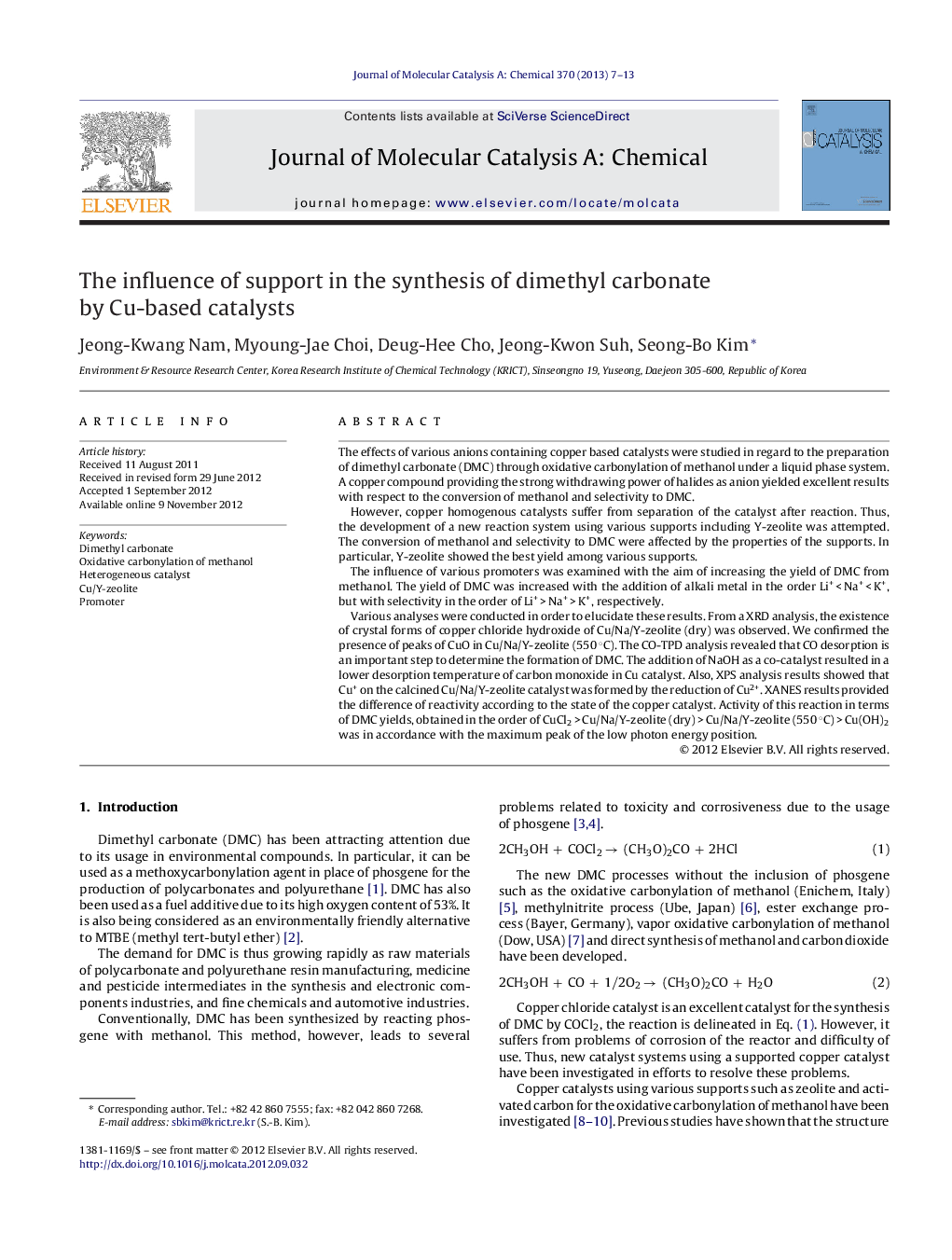| کد مقاله | کد نشریه | سال انتشار | مقاله انگلیسی | نسخه تمام متن |
|---|---|---|---|---|
| 65877 | 48408 | 2013 | 7 صفحه PDF | دانلود رایگان |

The effects of various anions containing copper based catalysts were studied in regard to the preparation of dimethyl carbonate (DMC) through oxidative carbonylation of methanol under a liquid phase system. A copper compound providing the strong withdrawing power of halides as anion yielded excellent results with respect to the conversion of methanol and selectivity to DMC.However, copper homogenous catalysts suffer from separation of the catalyst after reaction. Thus, the development of a new reaction system using various supports including Y-zeolite was attempted. The conversion of methanol and selectivity to DMC were affected by the properties of the supports. In particular, Y-zeolite showed the best yield among various supports.The influence of various promoters was examined with the aim of increasing the yield of DMC from methanol. The yield of DMC was increased with the addition of alkali metal in the order Li+ < Na+ < K+, but with selectivity in the order of Li+ > Na+ > K+, respectively.Various analyses were conducted in order to elucidate these results. From a XRD analysis, the existence of crystal forms of copper chloride hydroxide of Cu/Na/Y-zeolite (dry) was observed. We confirmed the presence of peaks of CuO in Cu/Na/Y-zeolite (550 °C). The CO-TPD analysis revealed that CO desorption is an important step to determine the formation of DMC. The addition of NaOH as a co-catalyst resulted in a lower desorption temperature of carbon monoxide in Cu catalyst. Also, XPS analysis results showed that Cu+ on the calcined Cu/Na/Y-zeolite catalyst was formed by the reduction of Cu2+. XANES results provided the difference of reactivity according to the state of the copper catalyst. Activity of this reaction in terms of DMC yields, obtained in the order of CuCl2 > Cu/Na/Y-zeolite (dry) > Cu/Na/Y-zeolite (550 °C) > Cu(OH)2 was in accordance with the maximum peak of the low photon energy position.
Figure optionsDownload high-quality image (133 K)Download as PowerPoint slideHighlight
► Among various metal catalysts, copper chloride showed the highest activity and selectivity of DMC among Mg, Ca, Co and Fe containing chlorides.
► Copper chloride and copper bromide, having strong electron withdrawing power provided high yields of DMC.
► Y-zeolite yielded the best results on conversion of methanol and selectivity to DMC among various support.
► The addition of alkali metal hydroxides increased the conversion and selectivity.
Journal: Journal of Molecular Catalysis A: Chemical - Volume 370, April 2013, Pages 7–13